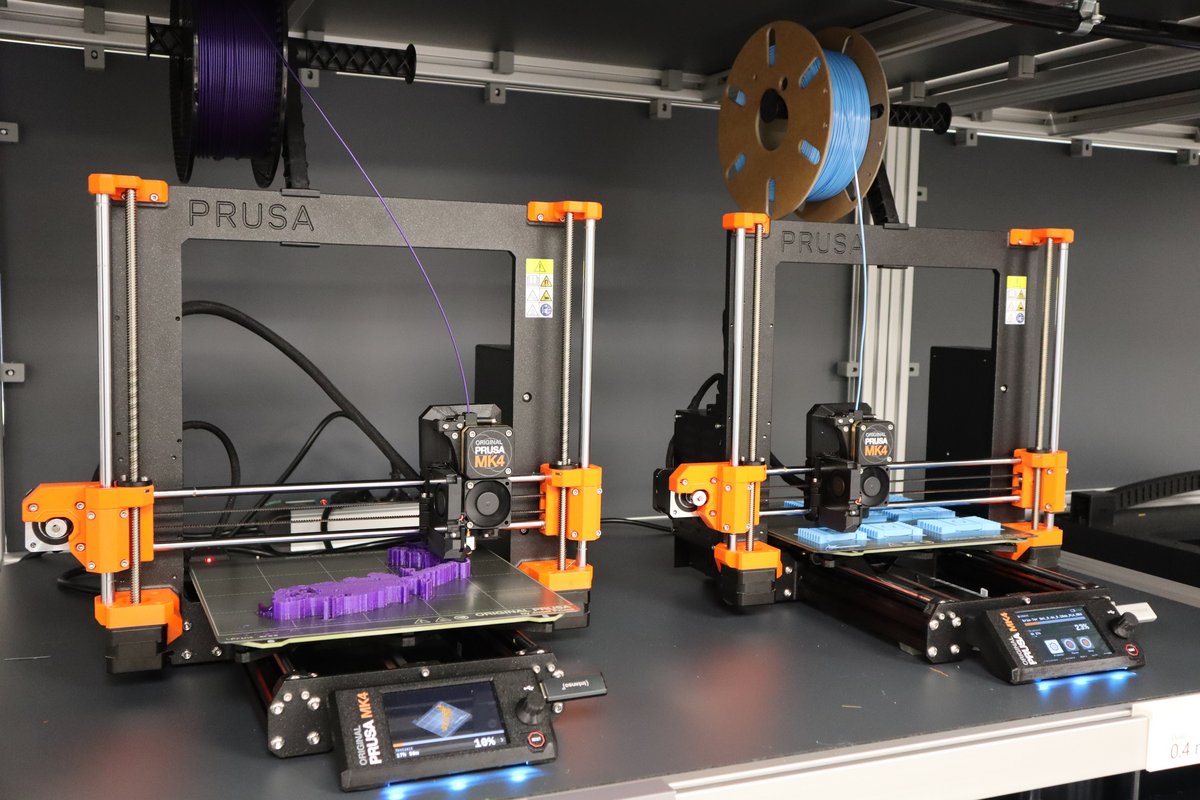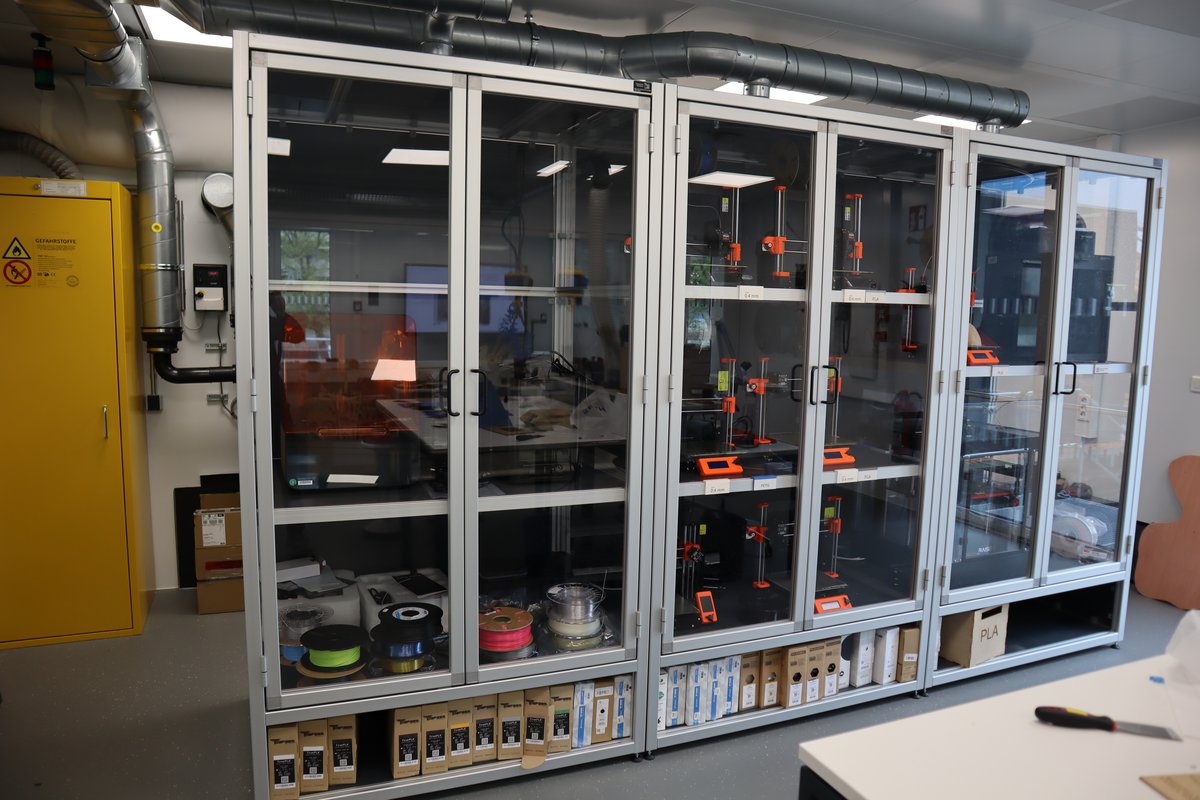3D printing can be used to produce, for example, very complex objects with internal channels or grid structures that are difficult or impossible to produce using conventional manufacturing methods.
How do FFF printers work?
Fused filament fabrication (FFF) is a manufacturing process that uses meltable plastic to produce objects layer by layer. The plastic, also known as filament, is wound onto a spool as a thin wire and can consist of a wide variety of materials. A common material that is very easy to print is PLA, which is also predominantly used for prototyping in the FabLab. There are also other well-known materials: ABS, PETG and many more. 3D printing with this technology enables cost-effective prototyping. This process is very suitable for people who want to get into 3D printing.
Prusa
Prusa 3D printers are easy to use and impress with their excellent print quality. We recommend printing with PLA or PETG, as temperature-sensitive materials can be more difficult to process.

Technical information:
- Number of extruders: 1
- Print volume: 250 x 210 x 220 mm
- Filament diameter: 1.75 mm
- Layer height: 0.05-0.3 mm
- Material: PLA, PETG, ABS, ...
- Slicer software: PrusaSlicer
![[Translate to Englisch:] Prusa i3MK3S+](/fileadmin/_processed_/c/d/csm_IMG_1448_e14bf39322.jpg)
Technical information:
- Number of extruders: 1
- Print volume: 250 x 210 x 210 mm
- Filament diameter: 1.75 mm
- Material: PLA, ABS, PET, ...
- Slicer software: PrusaSlicer
![[Translate to Englisch:] Prusa Mini im FabLab Konstanz](/fileadmin/_processed_/4/e/csm_Mini_05bf228ee6.jpg)
Technical information:
- Number of extruders: 1
- Print volume: 180 x 180 x 180 mm
- Filament diameter: 1.75 mm
- Material: PLA, PETG, ASA, ...
- Slicer software: PrusaSlicer, Cura
![[Translate to Englisch:] Bambu Lab P1S im FabLab Konstanz](/fileadmin/_processed_/2/d/csm_IMG_1452_689148ab95.jpg)
Technical information:
- Number of extruders: 1
- Print volume: 256 x 256 x 256 mm
- Filament diameter: 1.75 mm
- Material: PLA, ABS, PET, ...
- Slicer software: Bambu Studio
How does stereolithography work?
The FabLab also offers the stereolithography process. This process involves curing a liquid synthetic resin layer by layer using a laser beam. The process is characterised by a very high level of detail and smooth surfaces. However, the materials for this process are significantly more expensive than those for FFF printing.
The Form 3 utilises LSF (Low Force Stereolithography) technology to produce objects from liquid synthetic resin. Very precise, isotropic, waterproof prototypes or end-use parts with smooth surfaces can be produced. The printed parts are irradiated with UV light in a curing chamber to give them the desired material properties.


![[Translate to Englisch:] Formlabs Form3 im FabLab Konstanz](/fileadmin/_processed_/1/f/csm_IMG_1447_c815949561.jpg)